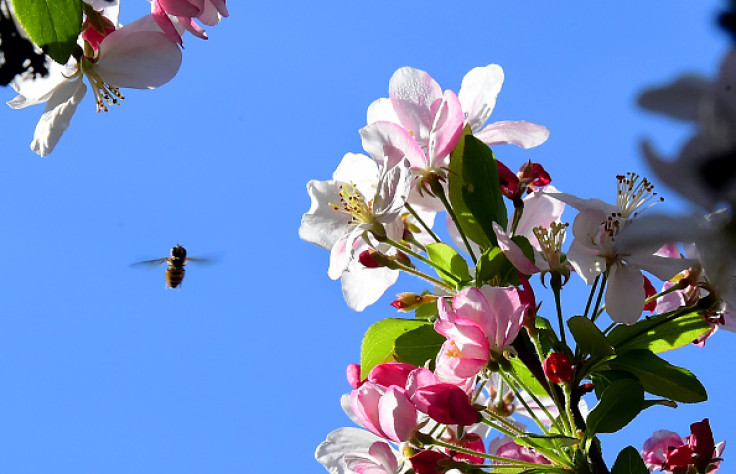Blue Moon: Meaning behind May's full flower moon and where to watch live online

The full moon that will rise in the sky on Saturday 21 May is known a seasonal "blue moon". This does not mean the celestial body will suddenly take on an azure shade. Rather, the name refers to a rare astronomical phenomenon.
The spring astronomical season we are currently in runs from the March equinox to the June solstice.
During an astronomical season, there are normally three full moons, but this year, four full moons will rise over the period.
The seasonal "blue moon" is the third full moon of such an unusual astronomical season, with four full moons instead of the usual three. This May, people will be able to observe a "blue moon", coming after the two March and April full moons, but before the June full moon that will close the season on 20 June − before the solstice.
Watching the rare event
The event is rare as a seasonal blue moon occurs only seven times in 19 calendar years. However, astronomers have also coined another "blue moon" definition − the term can also refer to a second full moon happening in one calendar month. Such a "blue moon" will happen next on 31 January 2018, according to website Earthsky.
Those who wish to see the full moon high in the sky through telescopes, can watch it live online below or on Slooh's website. It will be broadcast from Slooh's observatory in the Canary Islands, in collaboration with the Farmers' Almanac, on 21 May at 1am GMT.
Why is it also a "full flower moon"?
This May's full moon is also known as a "full flower moon". The name does not have to do with any astronomical event, but it is a tradition dating back to ancient tribes of native Americans, who gave a poetic, colourful name to each full moon.
These names reflected the changes happening in their natural environment. Moon cycles were followed closely, to keep track of the passing of time, with every full moon marking a particular moment in time.

The Farmers' Almanac, a North American periodical published since 1818 lists all the names of the different full moons, as they were known by the Algonquin tribe who lived in regions from New England to Lake Superior. Although other tribes used different names, the Algonquin denominations were the ones that Colonial Americans mostly adopted.
In May, in most areas where these tribes used to live, flowers are abundant, which is why Algonquin people chose this name. Other denomination were used by other populations, such as the Full Corn Planting Moon, or the Milk Moon − clear references to rebirth, fertility and nature.
© Copyright IBTimes 2024. All rights reserved.






